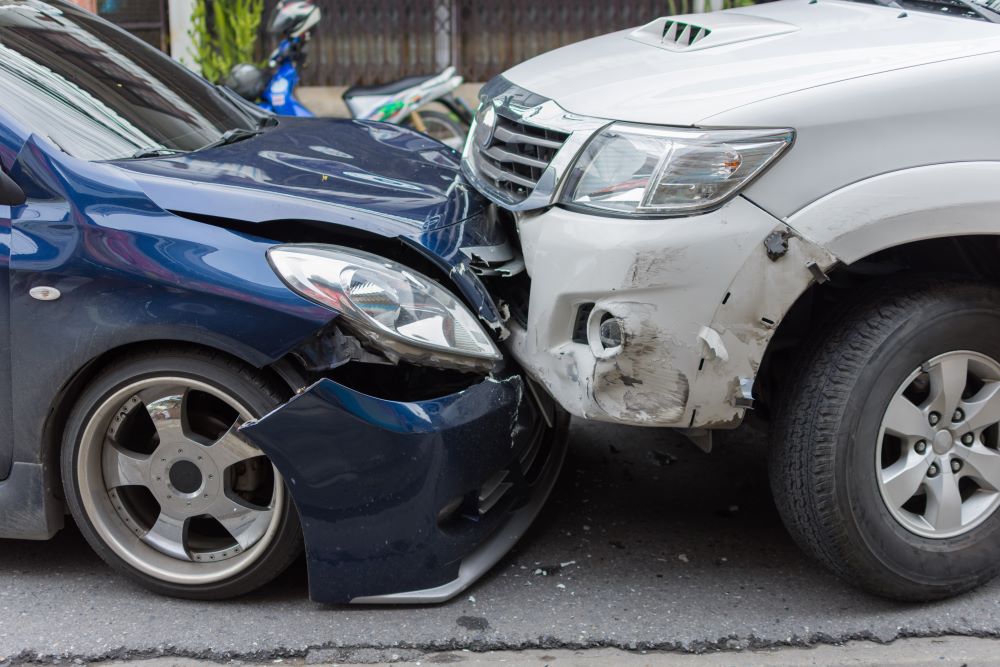Contributory negligence is a legal principle in North Carolina that essentially states if a person is even slightly at fault (1% or more) for an accident that caused them harm, they cannot recover damages from other parties who were primarily responsible for the incident.
North Carolina is one of the few U.S. states that still adheres to the contributory negligence rule. Most states follow a different rule, called comparative negligence, which allows a party to recover damages even if they were partly at fault, although the damages would be reduced proportionately.
If I Am Partly At Fault In An Accident, Can I Recover Damages?
In North Carolina, if you’re found to be even partially at fault for an accident (as small as 1%), you generally cannot recover damages from the other party or parties who may be primarily at fault. This is a stricter standard than in most other states, which follow a comparative negligence rule that allows for recovery of damages even when the injured party is partially at fault.
However, there are exceptions to this rule in North Carolina:
- Last Clear Chance Doctrine: This exception applies if the defendant had the “last clear chance” to avoid the accident but failed to do so. If you can prove this, you may still be able to recover damages despite your contributory negligence.
- Gross Negligence: If the defendant’s conduct is considered grossly negligent or willful, your contributory negligence may not prevent you from recovering damages.
Keep in mind that these issues can be complex, and determinations of fault often depend on the specific circumstances of the case. If you’re involved in an accident and believe you may have been partially at fault, you should consult with the auto accident lawyers at Paynter Law to understand your legal options.
How can I prove that I was not contributorily negligent?
Proving that you were not contributorily negligent in your accident requires presenting evidence to demonstrate that you did not contribute to causing the accident. Documentation and keeping records in and after the accident is crucial to giving your case a better chance of success.
Some of the records our personal injury team recommends collecting are:
- Medical Records: Seek immediate medical attention after the accident if you’re injured and keep a record of all your medical treatments. This can help prove the extent of your injuries and that they were caused by the accident.
- Expert Witnesses: Depending on the complexity of the accident, your attorney might hire expert witnesses, such as accident reconstruction experts, to provide an analysis of how the accident occurred and who was at fault.
- Provide a Clear and Consistent Account: Be clear, consistent, and truthful in your account of the accident. Any inconsistencies in your story could potentially be used against you to suggest that you were at least partially at fault.
It’s important to remember that proving that you were not at fault can be a complex process, and the standard of proof may vary depending on the specifics of the case and the court in which the case is being heard.
What sort of evidence is used?
Determining whether someone was contributorily negligent typically involves examining a wide range of evidence. Here are some types of evidence that are commonly considered:
- Photographic and Video Evidence: Photos and videos of the accident scene, the involved vehicles or objects, and any visible injuries can provide valuable context about what happened. These days, many public and private areas have surveillance cameras that might have captured the incident.
- Witness Testimony: People who saw the incident can provide firsthand accounts of what happened. Their statements can support your claim that you weren’t at fault.
- Police Reports: If law enforcement responded to the incident, they would have created a report detailing the facts as they understood them. This report may contain evidence about who was at fault.
- Medical Records: Medical records can show the extent of your injuries and might also provide insights into the causes of the accident.
- Expert Analysis: In some cases, professionals like accident reconstruction experts or engineers might be needed to analyze the evidence and provide an opinion about who was at fault.
- Physical Evidence: This can include anything from damaged vehicles in a car accident, to a damaged product in a product liability case, or broken stairs in a slip and fall case. The state of the physical evidence can often provide insights into what happened.
- Statements from Involved Parties: The statements of the plaintiff and defendant(s) are considered as well. Any inconsistencies or admissions can affect the determination of negligence.
Determining contributory negligence can be complex, and often involves not just presenting evidence but also arguing for a particular interpretation of the evidence. This is why it’s beneficial to have an experienced North Carolina personal injury attorney on your side if you’re involved in an accident.
Contact Our North Carolina Auto Accident Lawyers
If you’re involved in an accident that could involve issues of contributory negligence, you need an experienced personal injury attorney on your side. Contributory negligence laws, especially in states like North Carolina, can be complex and require detailed knowledge of both statutes and case law to navigate effectively.
Paynter Law is here to help protect your rights if you’ve been in an auto accident. We don’t get paid unless you get paid – contact us today to schedule your no-risk consultation!

